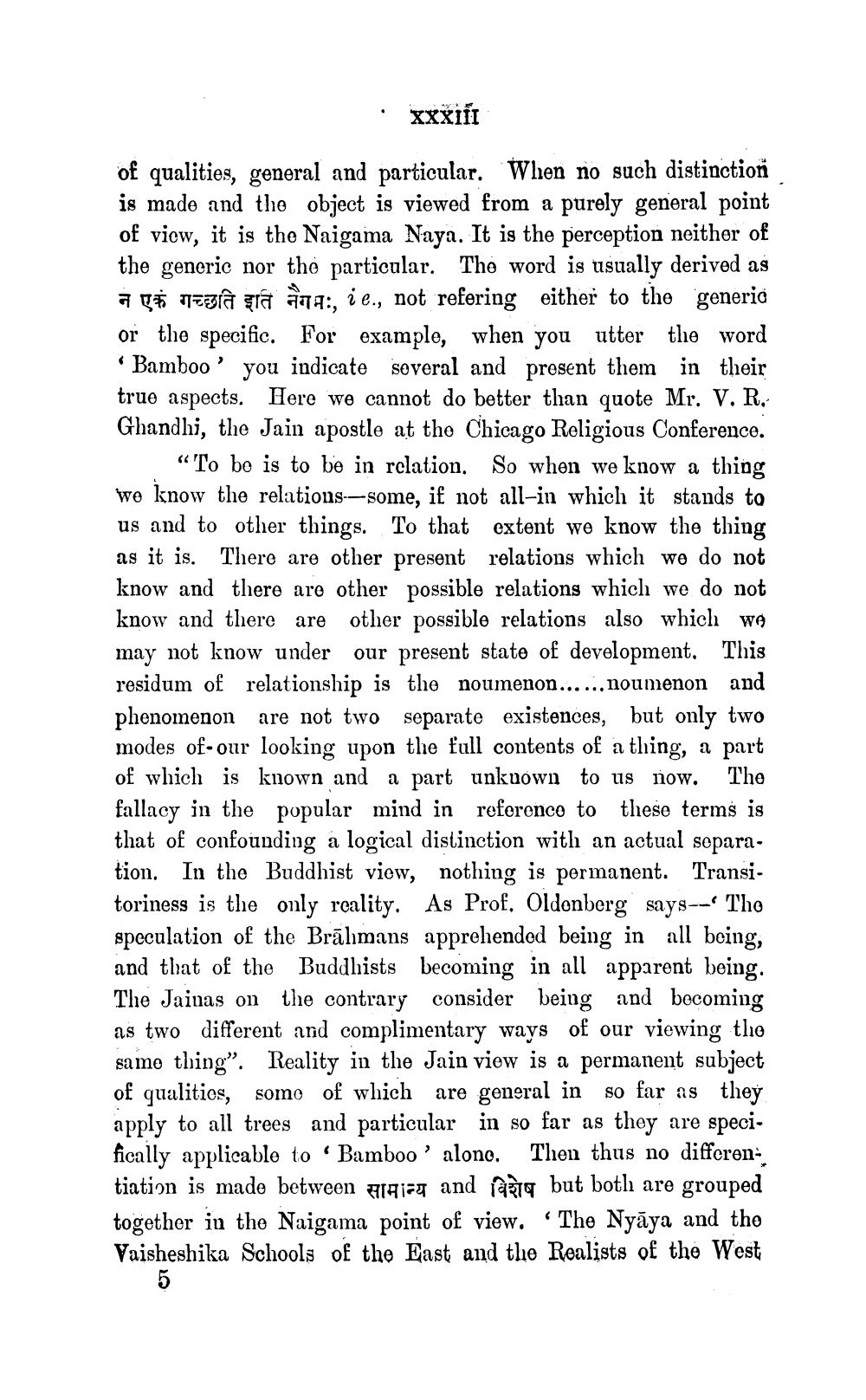________________
· XXXIÍI
of qualities, general and particular. When no such distinction is made and the object is viewed from a purely general point of view, it is the Naigama Naya. It is the perception neither of the generic nor the particular. The word is usually derived as a på stagâ gra 1979, i e., not refering either to the generic or the specific. For example, when you utter the word * Bamboo ' you indicate several and present them in their true aspects. Here we cannot do better than quote Mr. V. R. Ghandhi, the Jain apostle at the Chicago Religious Conference.
“To be is to be in relation. So when we know a thing we know the relations-some, if not all-in which it stands to us and to other things. To that extent we know the thing as it is. There are other present relations which we do not know and there are other possible relations which we do not know and there are other possible relations also which we may not know under our present state of development. This residum of relationship is the noumenon...... noumenon and phenomenon are not two separate existences, but only two modes of our looking upon the full contents of a thing, a part of which is known and a part unkuown to us now. The fallacy in the popular mind in reference to these terms is that of confounding a logical distinction with an actual separation. In the Buddhist view, nothing is permanent. Transitoriness is the only reality. As Prof. Oldenberg says-- The speculation of the Brālmans apprehended being in all being, and that of the Buddhists becoming in all apparent being. The Jainas on the contrary consider being and becoming as two different and complimentary ways of our viewing the same thing". Reality in the Jain view is a permanent subject of qualitios, somo of which are general in so far as they apply to all trees and particular in so far as they are specifically applicable to · Bamboo' alono. Then thus no differentiation is made between Flairg and lafta but both are grouped together in the Naigama point of view. The Nyāya and the Vaisheshika Schools of the East and the Realists of the West




